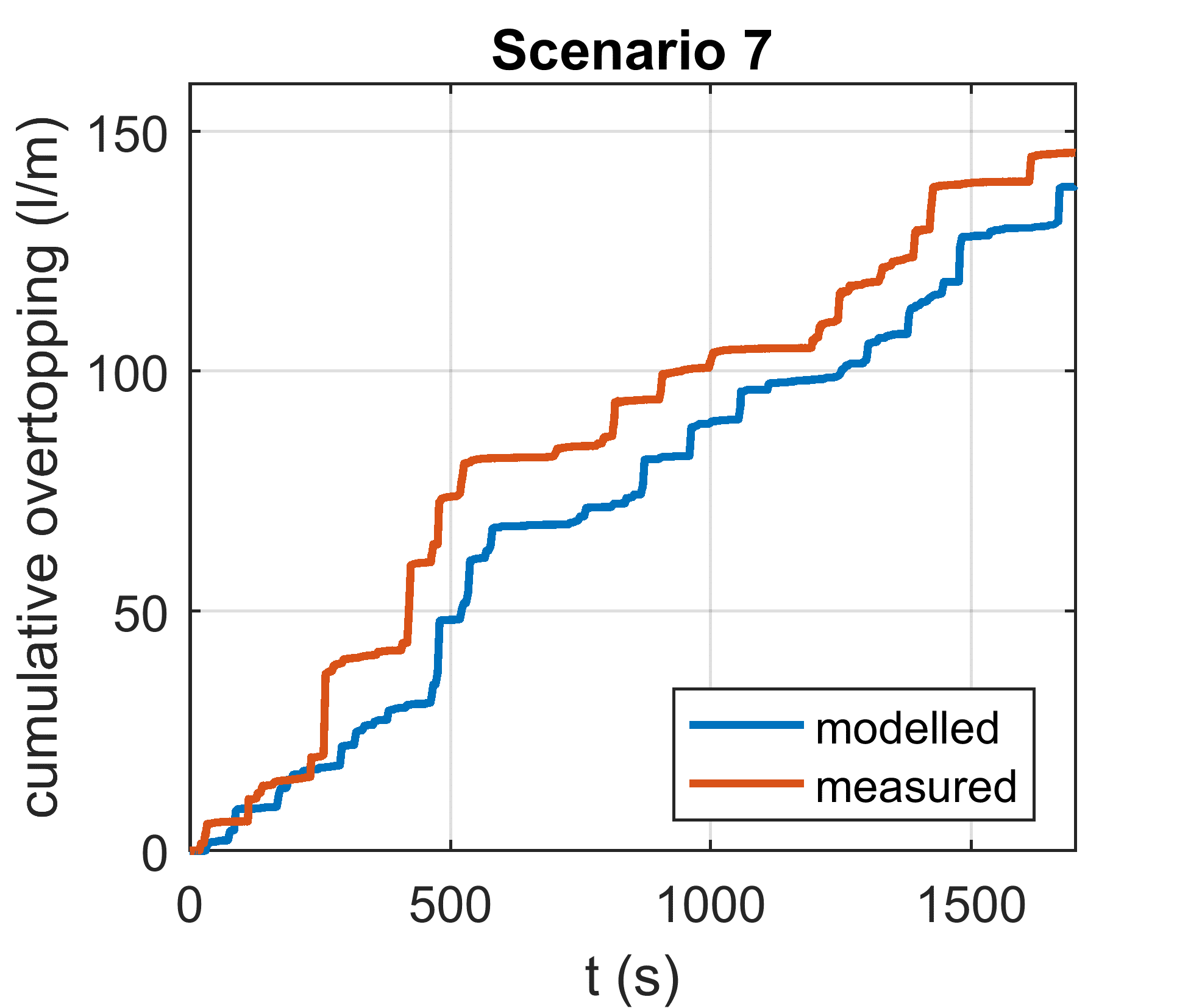
Comparing a Numerical Wave Flume with Scale Tests Focussing on the Wave Overtopping
The hydraulic design of coastal structures like breakwaters and revetments is generally based on empirical formulations, physical model tests and a fair amount of expert judgement. Each of these techniques has his own accuracy and efficiency. The differences between these properties for each method is quite large. To provide an additional design tool, the Joint Industry Project JIP Coastal FOAM was started with the goal to further develop and apply a numerical wave flume to simulate the wave/structure interaction of permeable coastal structures.
The applied numerical wave flume is OpenFOAM® in combination with a module for wave generation (Waves2Foam, Jacobsen et al., 2012) and a module to model the hydraulic conditions inside permeable coastal structures (Jacobsen et al., 2015). This combination makes it possible to address the interaction between waves and permeable coastal structures.
Over the past years, several applications of this model were investigated and validated within the JIP Coastal FOAM framework. The work of Van Gent et al. (2017) showed how the model can be used to address the modelling and design of open filters under wave loading. Furthermore, Jacobsen et al. (in press) applied the model to predict the integrated wave loads on crest walls on top of rubble mound breakwaters.
The present paper addresses another design aspect of coastal structures, namely the overtopping. The paper presents the calibration of the numerical model against experimental data of overtopping volumes from small scale physical model tests for a permeable rubble mound breakwater. The results for Scenario 7 are given in Figure 1. Part of the experimental results were used to calibrate the model. Based on the rest of the experimental data the accuracy of the calibrated model was determined. Using the validated model, random time series of a known wave spectrum were applied to investigate the mean overtopping discharge as a function of these timeseries and the potential variability in results. Finally, the calibrated model was compared to the non-calibrated version and empirical relations. This final comparison revealed the usefulness of the numerical wave flume in the situation that no scale tests are available. This situation often occurs in the design process of coastal structures.


Powered by Eventact EMS